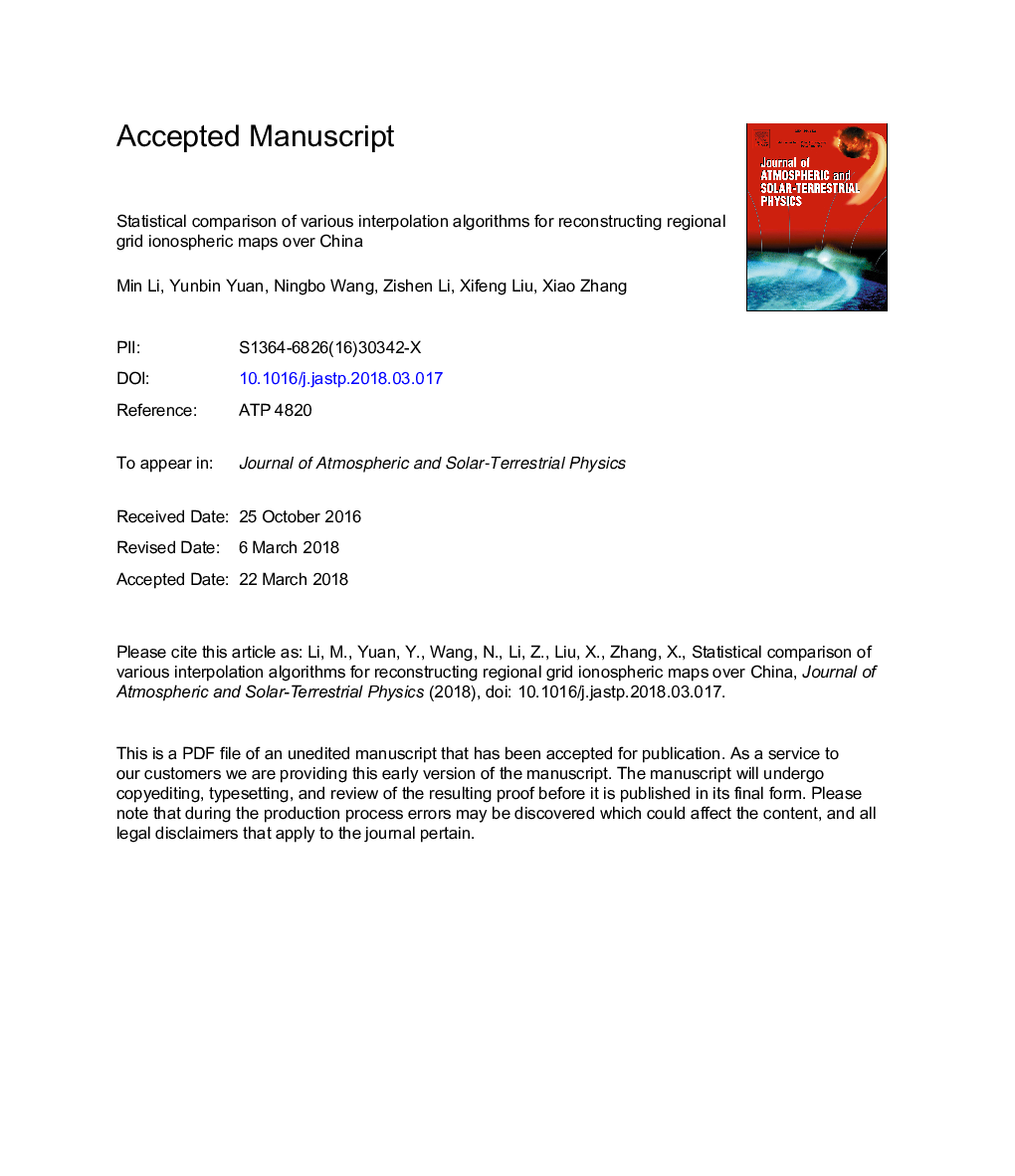| Article ID | Journal | Published Year | Pages | File Type |
|---|---|---|---|---|
| 8139475 | Journal of Atmospheric and Solar-Terrestrial Physics | 2018 | 20 Pages |
Abstract
This paper presents a quantitative comparison of several widely used interpolation algorithms, i.e., Ordinary Kriging (OrK), Universal Kriging (UnK), planar fit and Inverse Distance Weighting (IDW), based on a grid-based single-shell ionosphere model over China. The experimental data were collected from the Crustal Movement Observation Network of China (CMONOC) and the International GNSS Service (IGS), covering the days of year 60-90 in 2015. The quality of these interpolation algorithms was assessed by cross-validation in terms of both the ionospheric correction performance and Single-Frequency (SF) Precise Point Positioning (PPP) accuracy on an epoch-by-epoch basis. The results indicate that the interpolation models perform better at mid-latitudes than low latitudes. For the China region, the performance of OrK and UnK is relatively better than the planar fit and IDW model for estimating ionospheric delay and positioning. In addition, the computational efficiencies of the IDW and planar fit models are better than those of OrK and UnK.
Related Topics
Physical Sciences and Engineering
Earth and Planetary Sciences
Geophysics
Authors
Min Li, Yunbin Yuan, Ningbo Wang, Zishen Li, Xifeng Liu, Xiao Zhang,
